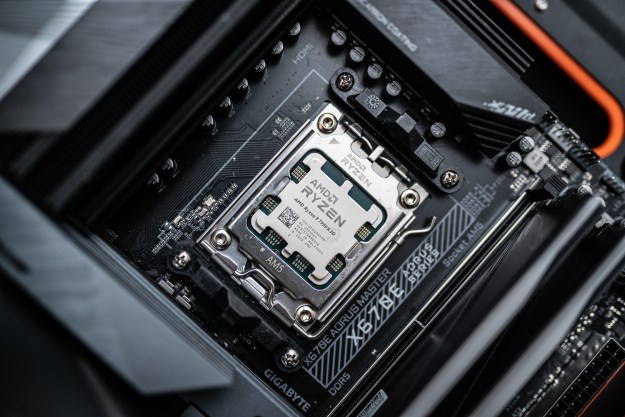
Last week, Polygon‘s Brian Crecente reported that the consumer version of Sony’s PlayStation VR would require a weighty black processing box to work with your PS4. Around the size of the original Wii, the external processor is used to render VR graphics and “social screen” functionality on the TV.
Since then, Eurogamer has gone even further with Crecente’s claims, finding exact dimensions for the PlayStation peripheral along with a complete list of input and output specs.
While Polygon wasn’t precise in drawing comparisons to the Wii, it wasn’t totally wrong either. In fact, it’s now been revealed that the PlayStation VR processor comes in at 140×140×35mm compared to the Wii’s 215×157×44mm dimensions. This means the Wii was nearly 2.2 times the PlayStation VR unit’s overall volume.
Related Offer: PlayStation VR at Gamestop | Playstation VR at Best Buy
IO-wise, the PlayStation VR processor features a power input, HDMI input and output, and a micro-USB port all located on the rear for connecting to the PS4. On the front of the device, you’ll find outputs to the headset itself. The external processor, according to both Polygon and Eurogamer, appears to be the same as the one Tweeted about by VRFocus earlier this month.
#PlayStationVR cable features power, volume, mic controls, first images revealed: https://t.co/bMT3PCykefpic.twitter.com/7wzvQxAlzB
— VRFocus (@VRFocus) December 5, 2015
Before the emergence of these reports, Sony had issued a substantially smaller piece of tech to developers in conjunction with PlayStation VR. Since its reveal as Project Morpheus back at GDC 2014, the only thing that’s changed with the platform as a whole is its ability to display software with a 120Hz refresh rate, and as Eurogamer points out, the PS4 could do that on its own — without the inclusion of a hulking black box.
So, what does the new processing unit do differently? Unfortunately, no one really knows yet.
When Sony bumped the HMD’s display to 120Hz, asynchronous time-warp was also added. This means games running at 60 frames per second could be artificially upscaled, presumably to 60fps for each eye. It also “warps” frames to keep up with the headset’s most recent motion data. By making sure the display responds as immediately as possible to head movement, it can help to alleviate nausea induced by prolonged use.
Theoretically, the increasingly sizable processing box could be responsible for these new improvements, but no one can say for sure. What we can say is that the processor almost has to feature some level of added power, and it isn’t modest, as it presents an active cooling system. The ~25mm fan is located on the rear end of the unit, and though it’s fairly quiet, this suggests that the hardware is at least powerful enough to require refrigeration.
All in all, though it’s unlikely we’ll see graphics rendering being foisted onto PlayStation VR’s external processor, it does present a number of questions regarding the retail release of the unit. How will this black box affect the final price of PlayStation VR? What can it pull off now that it wasn’t capable of before?
Surely, we’ll find out soon.
Editors' Recommendations
- This PS5 Pro leak reveals a massive jump in performance
- Nvidia RTX 3080 vs. Microsoft Xbox Series X vs. Sony PlayStation 5
- What will PlayStation 5 and Xbox Series X games look like at launch?
- Sony’s cartridge patent may describe a custom external SSD for the PlayStation 5


